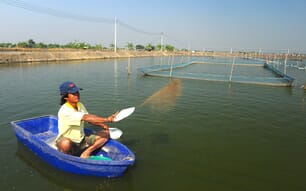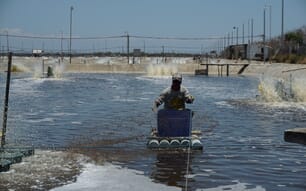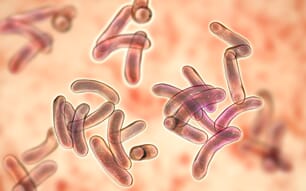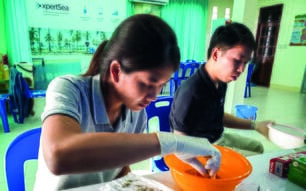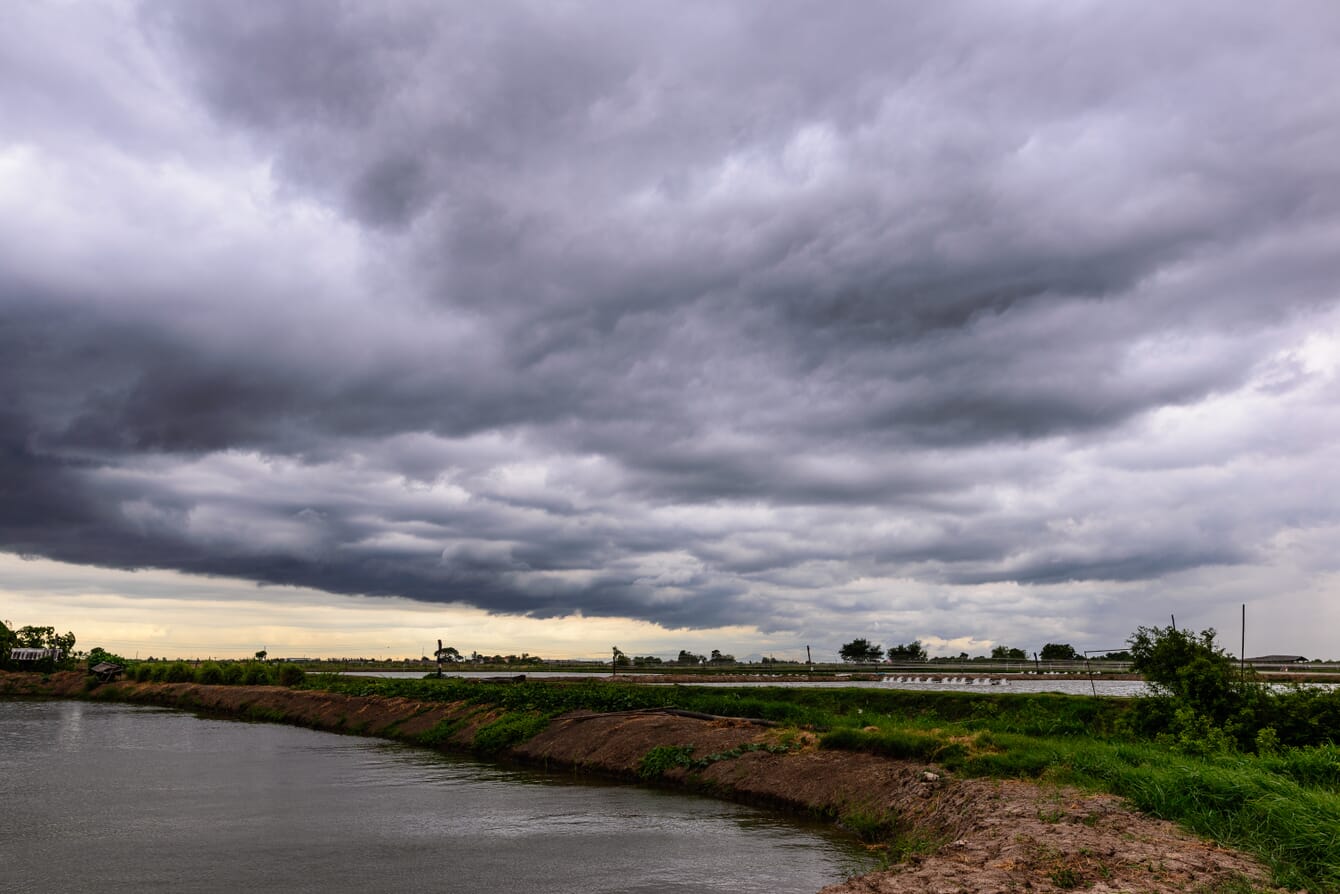
Rain presents a significant challenge for shrimp farmers all over the world. When the rainy season arrives shrimp production will naturally decline, reflecting the management challenges that rainfall brings to a farm cycle. While many farmers manage rainfall every year with little consequence, it is wise to have a well-trained team and robust standard operating procedures (SOPs) in place to respond to the impact of rain.
Rainfall can quickly alter pond conditions and trigger a chain of events that could result in sub-optimal water quality and stunted shrimp growth. It is important to understand what happens in shrimp farms during rainy weather, what to prepare and how to counteract the problems it may present.
What happens to shrimp ponds during rain storms
Rain is often followed by a drop in temperature, usually of about 5 to 6°C, but it could vary based on different atmospheric conditions. As shrimp feed uptake is highly dependent on temperature, a 1°C drop in pond water temperature could lead to 5 to 10 percent decrease in feed consumption.
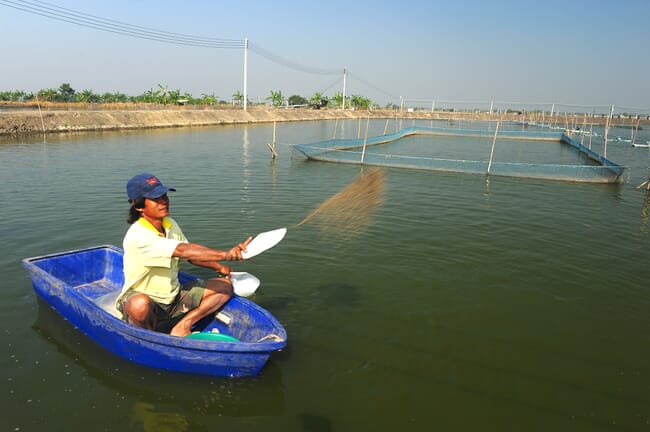
Rainwater will also alter other key water parameters due to the dilution of the pond water with freshwater. This will lead to a decrease in pH and cause variabilities in salinity and alkalinity depending on the volume of rainwater and existing pond management practices. When pH and alkalinity levels are low, the activity of phytoplankton and beneficial bacteria will be disrupted. Similarly, when alkalinity decreases the shrimp shells could be weakened due to the lack of necessary minerals.
Lack of sunlight during rain showers can also slow phytoplankton activity. Diminished light can interrupt the photosynthetic process of phytoplankton (autotrophs) in the water and decrease dissolved oxygen (DO) levels. The low pH, reduced mineral concentration, decrease in DO levels and less sunlight availability after heavy rainfall could cause a plankton and microalgae crash. If this occurs, the dead phytoplankton and microalgae could add to the organic load in the pond and degrade overall water quality.
When organic load increases after the crash, heterotrophic bacteria that assist with decomposition will proliferate and exploit this niche. As the heterotrophs multiply, the biological oxygen demand (BOD) could increase dramatically. If producers do not take action at this point, the DO level could drop further.
When combined, these unfavourable conditions could result in slow shrimp growth. The lack of necessary minerals could also trigger moulting in the shrimp, resulting in weaker immune responses and softer shells. In a worst-case scenario, the moult could fail over two to three days. The low DO, pH and temperature water environment is also ideal for Vibrio spp. to flourish, increasing the risks of bacterial infection to the shrimp.
In extensive shrimp farms with earthen ponds and insufficient or no aeration, the reduced DO level and the increasing amount of organic matter could likely trigger the production of hydrogen sulfide (H2S). This is a toxic gas produced by sulphate reducing bacteria and is highly toxic to shrimp. The gas is only safe at levels of 0.0087 ppm for L. vannamei post larvae and 0.0.185 ppm for L. vannamei juveniles. When exposed to H2S, even for a short period of time, shrimp will be significantly weakened and vulnerable to various infections. In high quantities, H2S can cause mass mortalities.
What to do during rain storms
If producers understand how rainfall can adversely affect shrimp farms – from the accumulation of organic matter in the pond bottom, deteriorating water quality and slowing growth – they can prepare and counteract any issues that arise. Here are Alune’s recommendations.
Preparation
- Use weather forecasts to monitor local weather conditions
- Ensure that all aeration equipment and the electricity set-up is in good working order
- Ensure your farm has drainage pipes that would allow surface water to be discharged or flowed out properly
- It may be necessary to have power generator ready in case of power outage due to severe rainfall
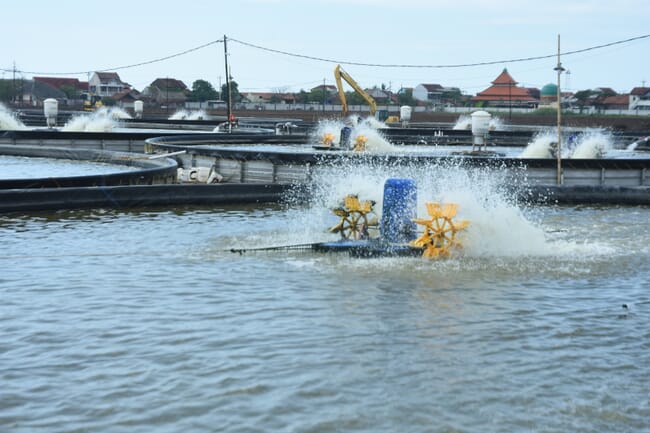
Countermeasures during the rain
- Ensure all aeration equipment is working properly to maintain acceptable DO levels, ideally above 5 ppm
- If possible, flow out the surface water to prevent significant salinity drop
- Regularly monitor key water quality parameters, such as DO, pH and alkalinity
- Apply CaO, CaCO3, or CaMg(CO3)2, or other treatment to increase alkalinity
- Reduce feeding rate and monitor pond conditions. Adjust the feeding rate accordingly
Measures after the rain
- Ensure aeration is maintained
- If salinity drops below optimal levels, add new treated seawater (depending on your water condition)
- Administer probiotics to increase decomposition and nitrification rate. This will also inhibit the growth of pathogens
- Increase feeding rate in accordance with key parameters like temperature, pH and DO
- Sample the pond to estimate the shrimp population and to detect any mortality events
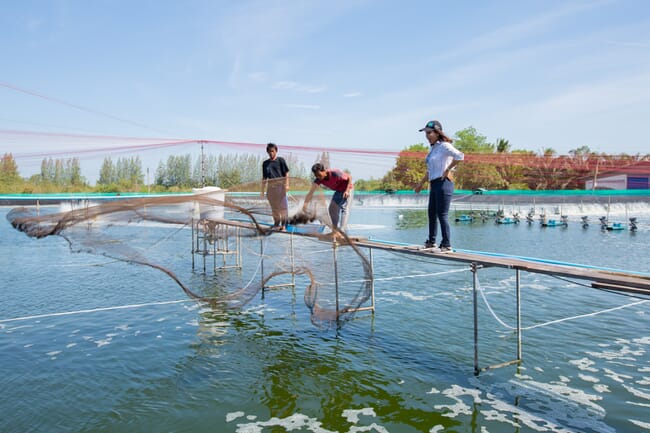
- Apply minerals to counteract dilution effects
- Check water samples collected near the pond bottom to monitor the bacterial count. Use TCBS agar plates if available or send the samples it to your local laboratory.
- If you haven’t already, implement a regular pond cleaning routine. Siphon the pond bottom to reduce organic matter and dead phytoplankton
Innovative solutions – technology
Water quality sensors
Innovations in water quality sensors are important for daily farming operations and can come in handy during rainfall. Tools like Baruno by JALA* and Aquaeasy by Bosch can measure key water quality parameters such as temperature, pH, DO and salinity, while simultaneously uploading the data to the cloud. This ensures up-to-date monitoring of pond conditions during rainfall and gives farmers data to make better decisions.
The water sensors could also be coupled with a weather alert system that notifies the farmer or their team of future weather events. Instead of checking the weather forecast manually, it can be incorporated with the water sensors to create a convenient system that helps farmers prepare themselves for incoming storms.
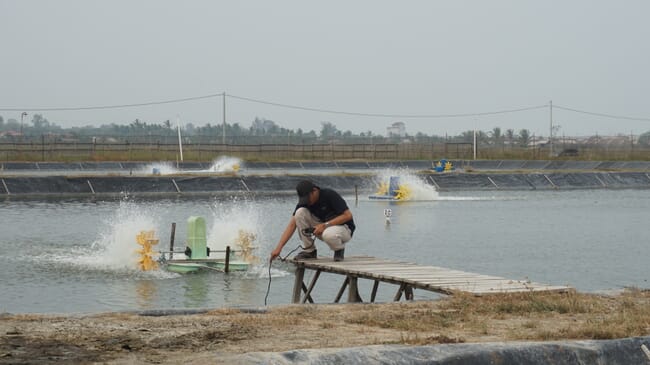
© JALA
Quick water treatment technology
After rainfall, farmers may need to implement water exchanges to maintain optimal salinity levels and encourage microflora growth. However, the new sea water needs to be treated before use and this would take time. Alternative technologies like UV irradiation and ozone technology provide faster treatment periods. Both UV and ozone technologies promise efficient water disinfection and can reduce pathogenic bacteria. This can minimise disease risks and provide a quicker solution than other water treatment methods.
UV and ozone technologies are commonly used in recirculating aquaculture systems (RAS). However, the technologies can be used in a semi-RAS set-up to replace the traditional water treatment method. Though the systems are expensive and might not be suitable for all shrimp farms, using them can help tackle rain challenges.
Rethink roofing
Roofs can be a simple way to protect shrimp ponds from external influences. They are commonly used in recirculation farms and can be adapted to conventional shrimp operations. Producers can use roofs to cover their grow-out ponds and to give partial cover pre-treatment ponds, ensuring that the treated water isn’t diluted by falling rain. However, building a roof can be expensive, and might not be suitable for high-density production systems.
* Alune and Jala part of Hatch's investment portfolio, but The Fish Site retains editorial independence.

